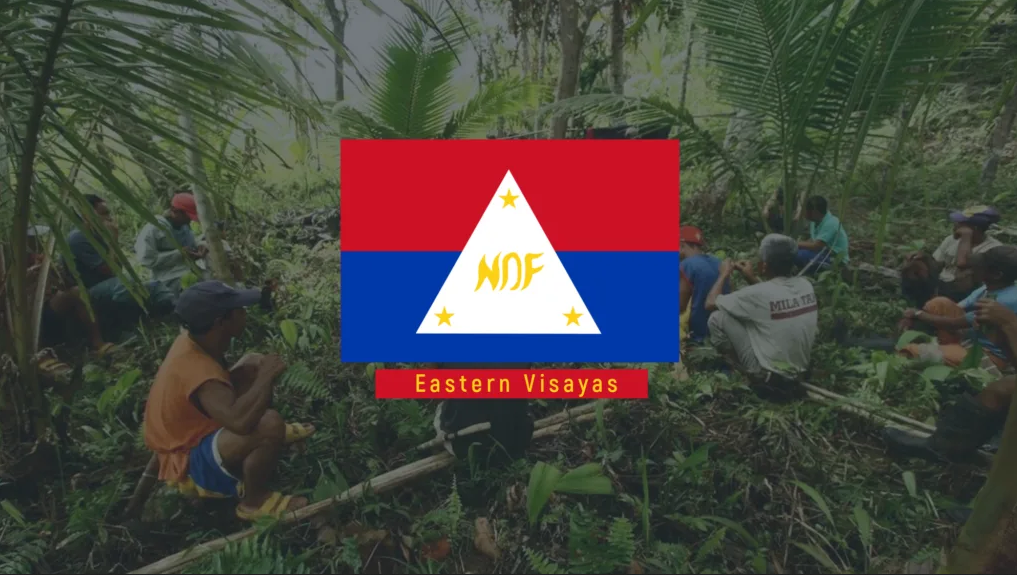On the 12th anniversary of the onslaught of super typhoon Yolanda, revolutionary forces in Eastern Visayas stand in indignation with the Filipino people over the prolonged tragedy suffered by victims of disasters. We deeply condole with the people of Cebu, Southern Leyte, Negros and other areas ravaged by typhoon Tino. Like other disaster victims, their miseries have been compounded by the criminal negligence, blatant corruption and capitalist greed of US imperialism and their cohorts among the Marcos regime and local bureaucrats.
With over 6,300 dead, hundreds missing, 4 million displaced, 16 million affected, and an entire city washed out, the destruction wrought by the strongest typhoon in recorded history should have been a wake-up call for the global climate crisis, the culpability of climate imperialism, and for government accountability in times of catastrophes. But more than a decade hence and in the aftermath of Tino, the lessons of Yolanda remain relevant.
Dominant imperialist countries such as US and China continue to lead in causing irreversible damage across the globe. Driven by profit and monopolizing markets, they perpetuate the exploitation of natural and human resources while peddling “climate solutions” or “environmentally-friendly solutions” such as in infrastructure and renewable energy. These merely mask their role in pollution and engendering worse typhoons, rising temperatures, land dispossession, death and destruction, as the toiling masses bear the brunt of their exploitative activities.
Like other semicolonial and semifeudal countries, the Philippines is ruled by a neocolonial regime upholding the interest of foreign (primarily US) and local capitalists. Under Marcos, these capitalist ventures are now in overdrive. Just three years into his term, Eastern Visayas received a total of ₱234 billion worth of local and foreign investments, almost eight times the total amount of investments under the Duterte regime and seven times under the Noynoy Aquino regime. But the poor families in the region had nothing to gain from these—in 2023 it ranked third among the regions with the most number of poor families.
Keen for their share of the loot, ruling political dynasties through the Regional Development (RDC) act as local peddlers to investors. Last March, it endorsed 4,445 “development projects” totaling ₱238 billion where 74% was allocated for infrastructure. Among its key projects is the Cancabato causeway, a ₱6-billion project contracted to a corporation owned by Zaldy Co who is a close ally of Leyte 1st district representative Martin Romualdez. The reclamation and construction of the causeway in Cancabato Bay will displace 500 families, destroy the livelihood of fisherfolk, and kill the mangroves that are natural protectors of the coastline. Most of the RDC’s key projects will be constructed in Leyte, bailiwick of the Romualdez clan who are relatives of President Marcos.
Not content with the cheap labor and raw materials extracted from existing industries, the Marcos regime and the RDC have further opened Eastern Visayas up to investors with whom they seek to profit from the region’s hydroelectric, solar, wind and tidal wave resources. Under the framework of Marcos’ National Renewable Energy Program, RDC members Sharee Ann Tan of Samar province and Harris Ongchuan of Northern Samar have recently pushed for the Gemini and Lihangin Wind Projects, both joint ventures of the US-based company Vena Energy, Vivant Energy of the Garcia-Escaño family, and Aboitiz Renewables. By cutting down century-old trees, destroying the ecological balance and changing the natural landscape of the area where the wind turbines will be erected, these projects will exacerbate the landslides and floods the region is vulnerable to.
The people have nothing to gain from these projects. Nearly 100% of power generated in Eastern Visayas already comes from geothermal energy which is supposedly “clean.” But 90% of electricity reaching consumers come from fossil fuel, ironic for an area heavily devastated by climate change. Supply in the region remains limited and erratic, while prices are expensive.
Disaster victims doubly suffer due to the ill-preparedness, incompetence and outright embezzlement of public funds by corrupt government officials. Should they be lucky to be alive, they are made to crowd in substandard evacuation centers and beg for aid. Disaster survivors receive little to no compensation for damages and are resettled in unlivable housing. Peasants drown in debt as their crops are destroyed by unpredictable floods or droughts. Ordinary people who assert their demands are red-tagged and silenced.
Government “flood-control” and “disaster-resilient” infrastructure projects are useless, ill-thought, and rightly earning the people’s ire as cesspools of corruption. The Tide Embankment Project in Leyte, touted as a structure against storm surges, remains unfinished despite its ₱14-billion budget and displacing residents in coastline barangays. It is a prime example of disaster capitalism just like the anomalous and backlog-ridden Yolanda housing program.
Since Yolanda, the Filipino people continue to face one disaster after another. Every time, they are forced to endure literal storms, grieve for the loss of loved ones and possessions, rebuild their lives and try to reclaim their dignity. It is a vicious cycle where every time, the government betrays them, deflects blame for their prolonged misfortunes, and worsens their suffering.
But every calamity also exposes the innate rottenness and irredeemable nature of the current ruling system, and why it should be changed. The Filipino people must thus wage national democratic revolution to fight climate imperialism. They must arouse, organize and mobilize their ranks, wage campaigns to put an end to environmentally-destructive practices by government, demand just compensation for the victims of calamities, and assert the protection of the country’s natural resources for the sustainable use of the people.
As Professor Jose Maria Sison aptly put it, “The fight for climate justice is necessarily a national and class struggle against the foreign monopoly capitalists and the local exploiting classes that bring about climate injustice.” The only way to achieve genuine climate justice is to bring about systemic change—to engineer the downfall of capitalism and usher in socialism.
